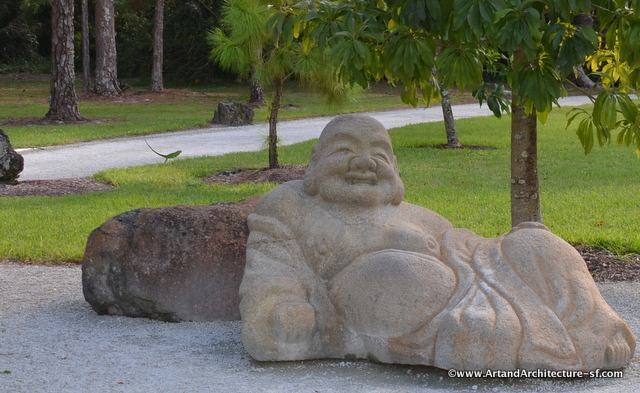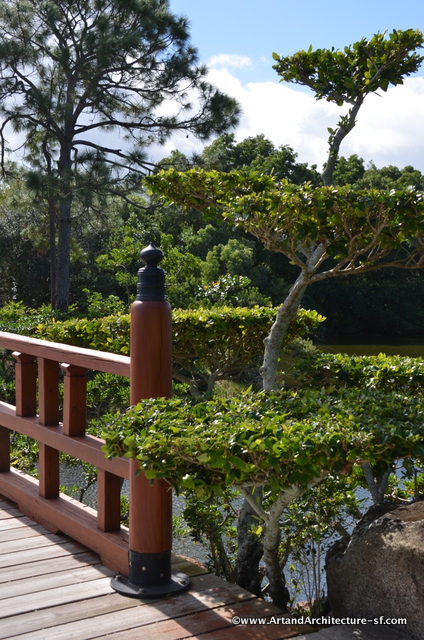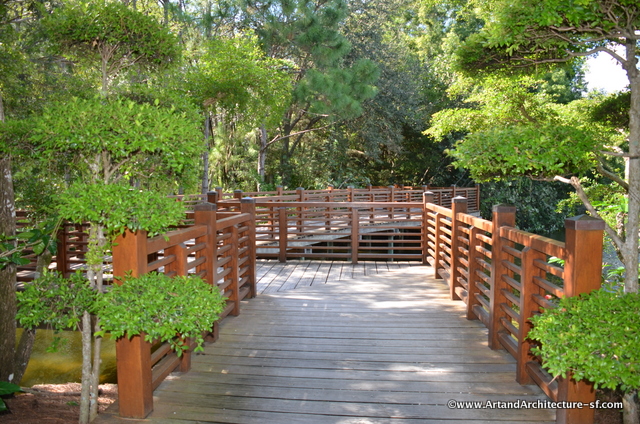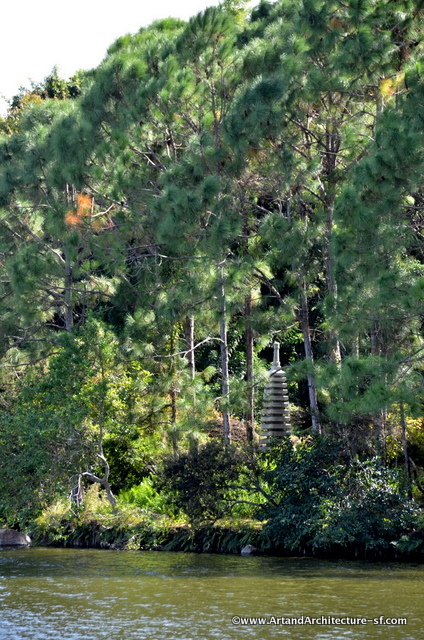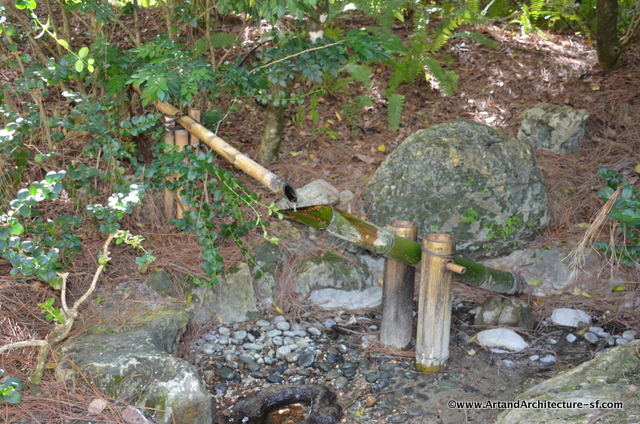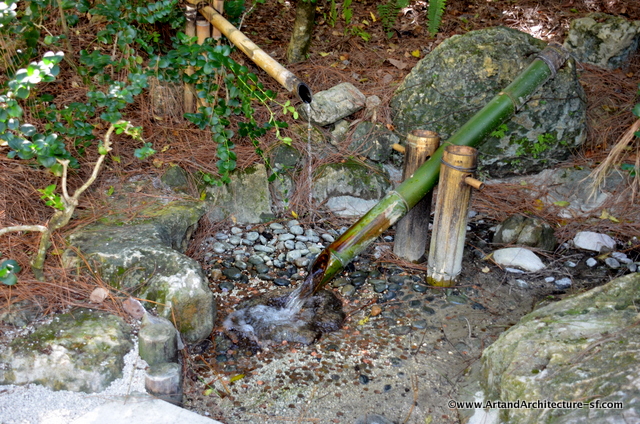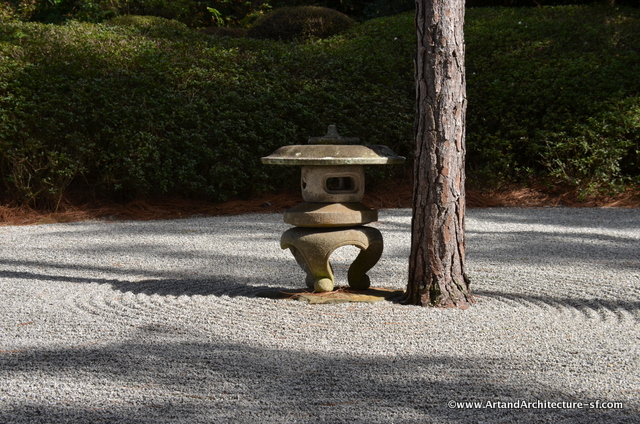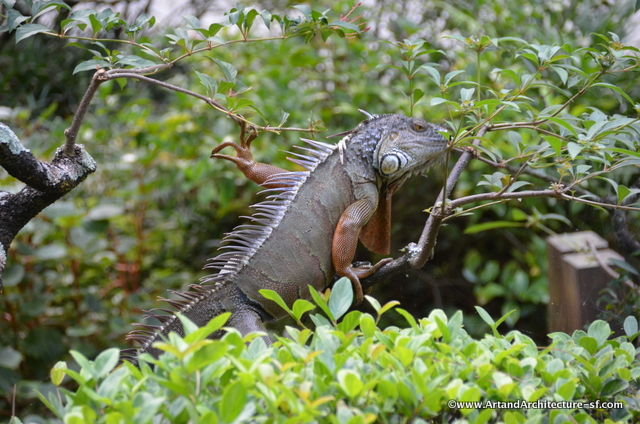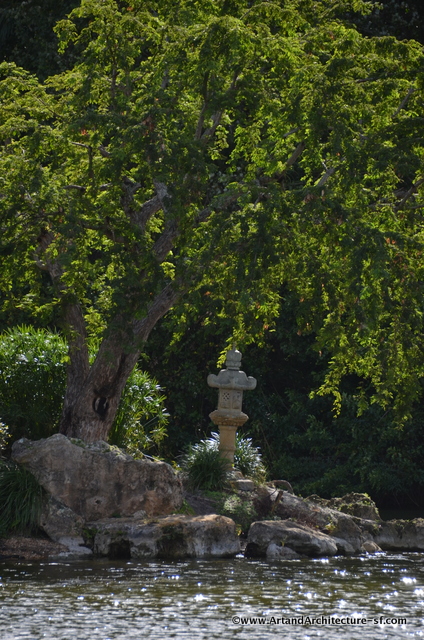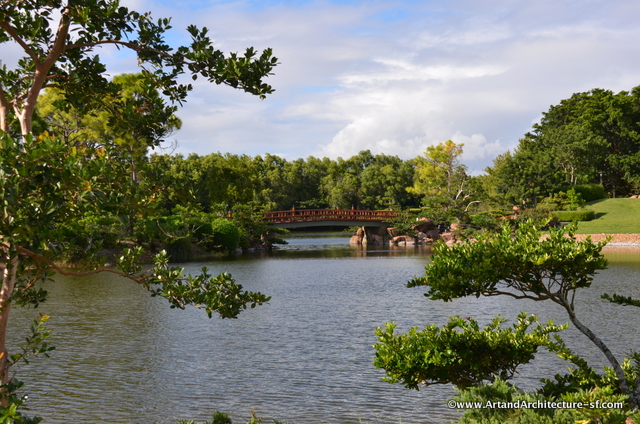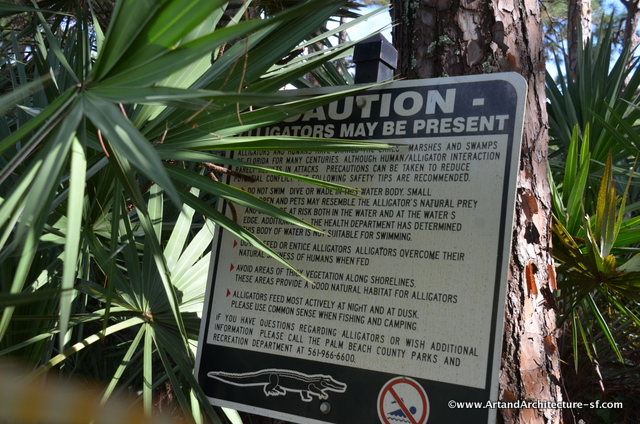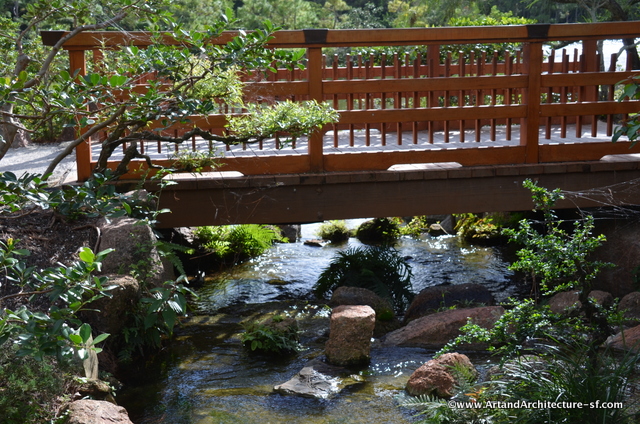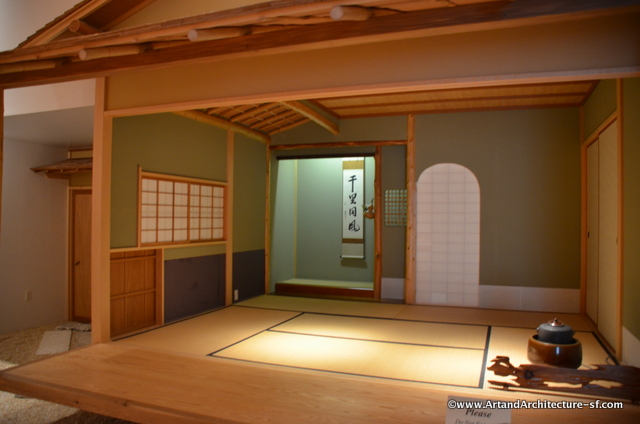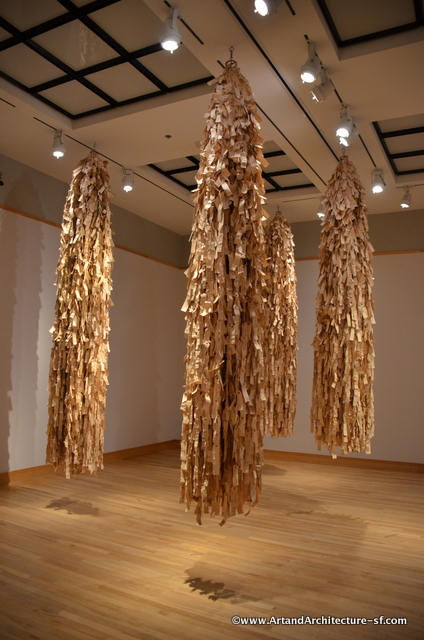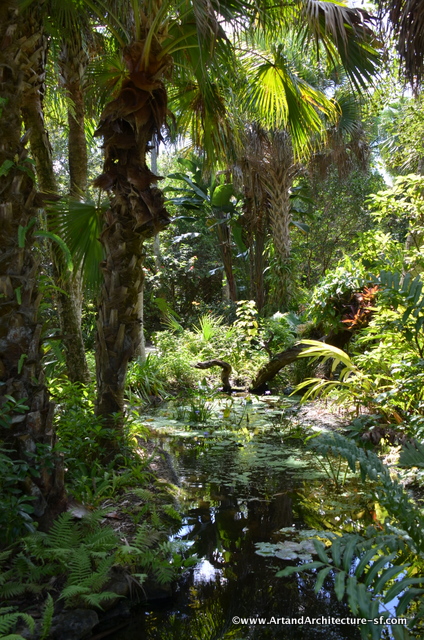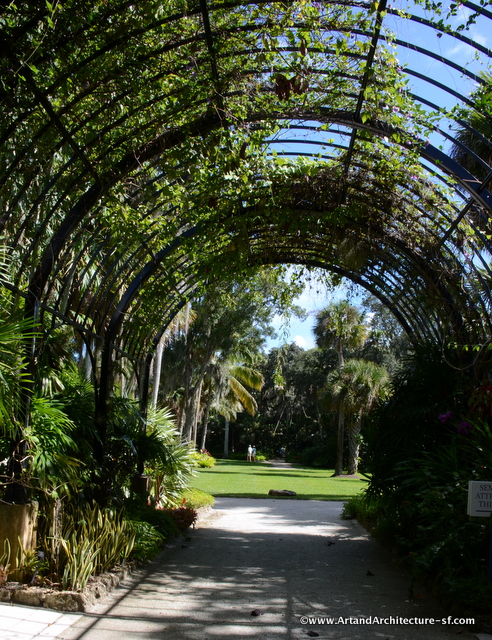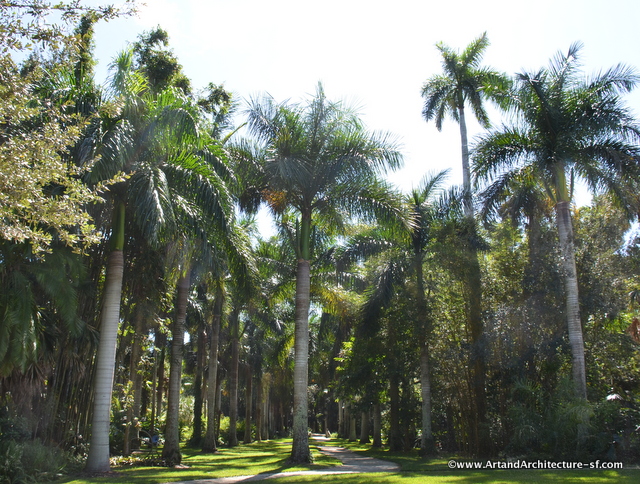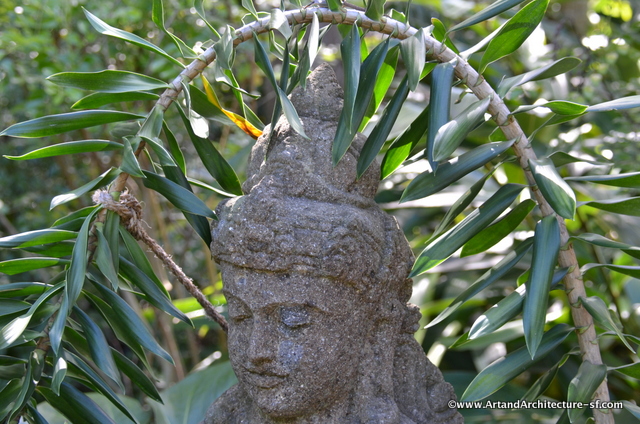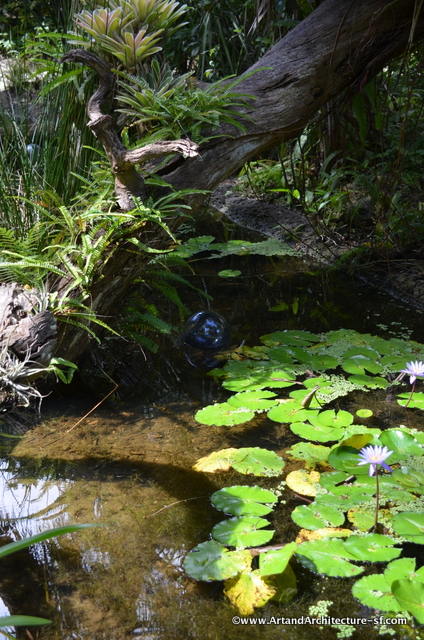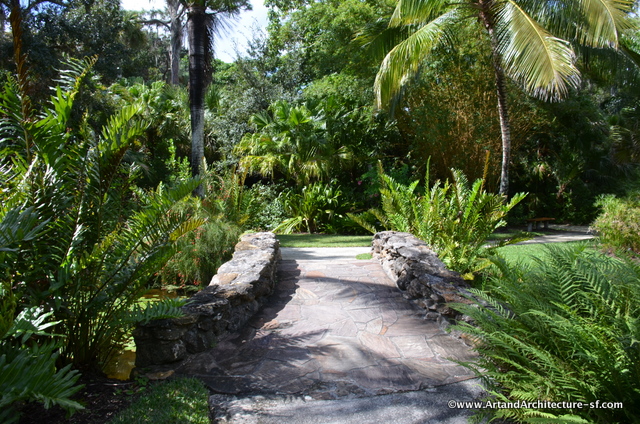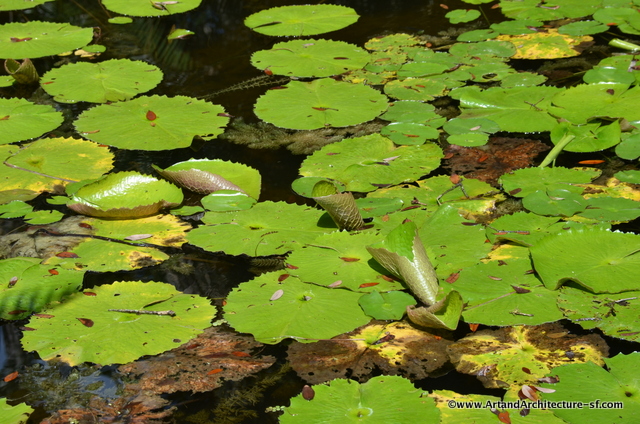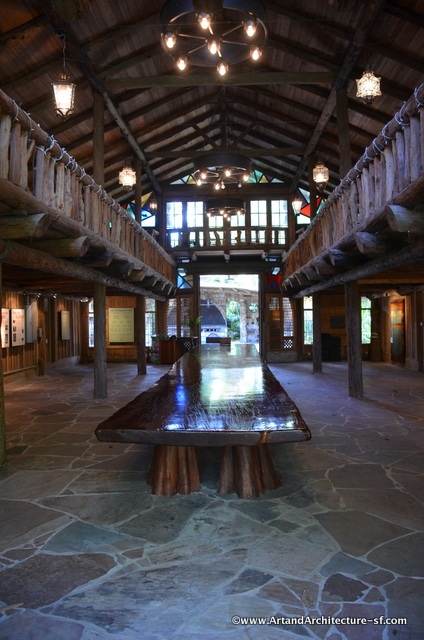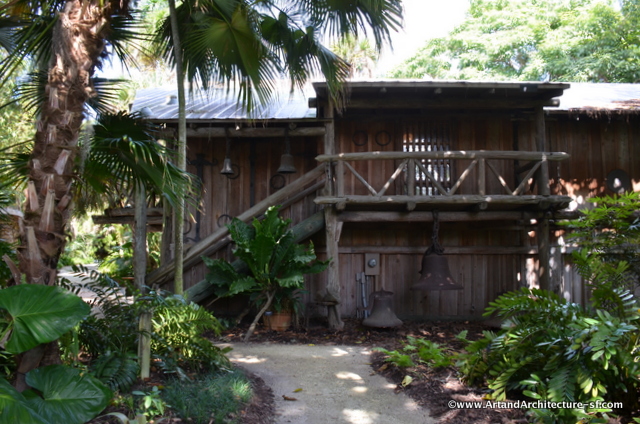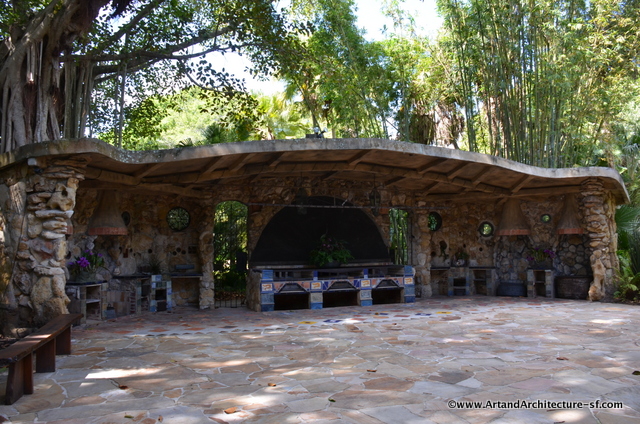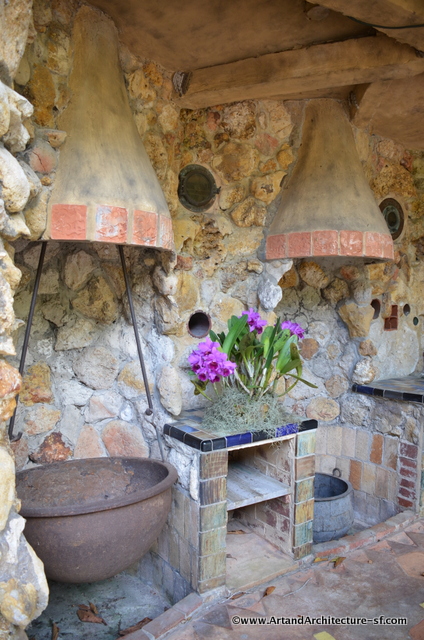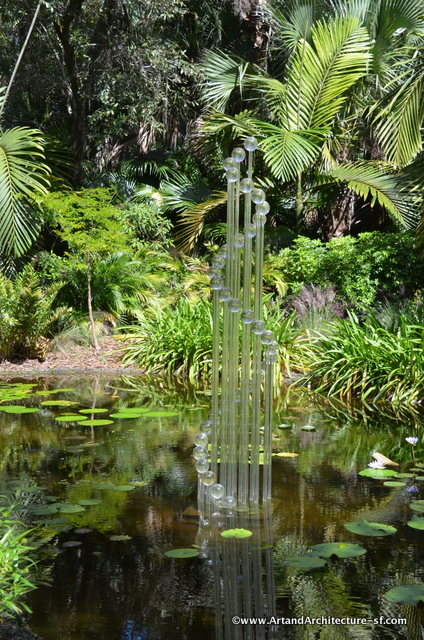October 2015
Morikami Museum and Gardens were established in 1977 after Mr. Morikami bequeathed the land for the garden.
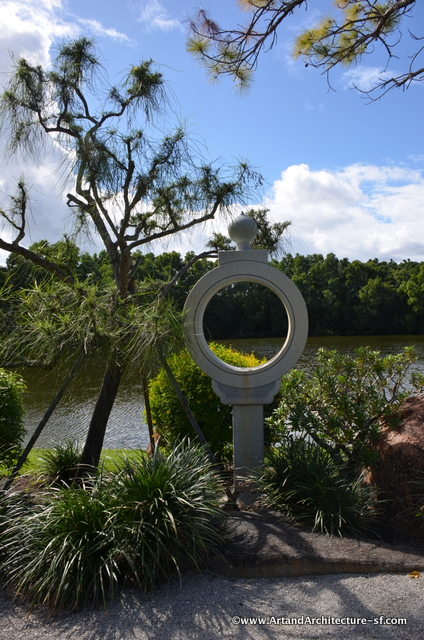
Chie no Wa or Wisdom Ring. This is a replica of a 500 year old stone lantern from the Japanese city of Miyazu. Originally the ring would hold a candle and the both sides would be covered with rice paper to create the lantern.
The Japanese influence to this part of Florida is interesting. In 1904, Jo Sakai, a new graduate of New York University returned to his home in Miyazu, Japan to organize a group of farmers with hopes of experimenting with new crops in the Boca Raton area of Florida. With the help of the Model Land Company, a subsidiary of Henry Flagler’s East Coast Railroad, they formed a farming colony they named Yamato.
Eventually the experiment was a disappointment and by the 1920s the small group of 30-35 people eventually left for other parts of the US or returned to Japan.
The garden was designed by landscape architect Hoichi Kurisu. Kurisu was born in Hiroshima, educated in Tokyo and today lives in Portland, Oregon. The garden took nearly two years to create and is intended to cover the eras from the 9th to the 20th centuries in Japanese Gardens.
This is a Shishi Odoshi, which means Deer Chaser. The bang of the bamboo against stone, was meant for just this purpose. If you have never seen one, the green bamboo holder fills with water and when full, drops to the stone, empties and makes a very loud bang. It then pops back up and the process begins again, as long as the stream keeps running the process is endless.

Ishidoro Stone Lantern- erected in 1681 in memory of the fourth Tokugawa shogun, the lantern made its way from Kan’eiji temple in Tokyo to a shipbuildier in Kure, Japan then to West Palm Beach and then a South Florida Museum, before finally resting in Morikami.
*
Just when you think you are truly in Japan you are reminded you just might not be.
*
There is a second story to the Yamato Colony mentioned above. In 1942 the few that remained in the Boca Raton area had their land seized by the government to create an Army Air Corps training base. They were eventually reimbursed for their land, but not at full market value.
George Marikami and other families retained their property and continued farming, but for a short time they had their bank accounts frozen and were watched closely by the Coast Guard.
During my visit there was a stunning exhibit by Wendy Maruyama titled Executive Order 9066. Ms. Maruyama’s mixed media pieces were moving and brilliant, but what took my breath away was The Tag Project.
The project consists of 10 hangings of 120,000 recreated identification tags. The number of tags corresponds with the number of Japanese citizens interned during WWII. The 10 hangings represent the 10 internment camps.
The Museum and Garden has a fabulous web presence, including an audio tour.
The following is a short video of the Bamboo. The crack and pop that you hear is simply the bamboo moving against each other.
